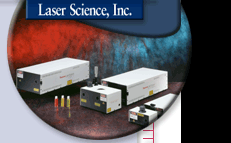
Physical chemists employ LIF in studies of the electronic structure of molecules. Environmental applications include monitoring concentrations of gases in the atmosphere, flames, and plasmas, and remote sensing using light detection and ranging (LIDAR). LIF based handheld instruments screen for surface uranium contamination. LIF is used for airborne hyperspectral imaging to monitor vegetation status and water pollutants. LIF spectroscopy is a nondestructive analytical tool for artwork diagnostics as each pigment gives a distinct spectral signature and the signatures of a suspect work can be compared to those of authenticated pieces. LIF offers very sensitive detection for the separation techniques capillary electrophoresis (CE) and microbore high performance liquid chromatography (HPLC). Laser Science, Inc. offers nitrogen lasers, tunable dye lasers, and tunable UV lasers giving the researcher the capability of inexpensively selecting the ideal exciting frequency from a broad range of laser frequencies. The pulsed nature of the lasers enables them to deliver high peak power without damaging the sample. Lasers can be focussed to a fine point for fluorescence studies of small samples. For more information, please contact us by phone at 888.888.8888, fax at 888.888.8889, or use the Contact Us form. |
| © 2000-2026 Laser Science,
Inc. All Rights Reserved |
|
|
 In
the biological arena, LIF is used for early cancer detection, to study
atherogenesis, and to track gene expression. Fluorescent probes (fluorophores)
are finely tuned to bind to specific proteins, viruses, enzymes, and
other target entities. By using probes with different emission spectra
such as coumarin (blue fluorescence), fluorescein (green), and rhodamine
(orange-red), multiple parameters can be examined in a single experiment.
Scientists are able to access very exciting information through fluorescence
microscopy imaging. That is, they can monitor processes happening in
a living cell. Much will be learned about the connection of genetic
defects and hereditary diseases and proteomics or the actions of proteins
in a cell.
In
the biological arena, LIF is used for early cancer detection, to study
atherogenesis, and to track gene expression. Fluorescent probes (fluorophores)
are finely tuned to bind to specific proteins, viruses, enzymes, and
other target entities. By using probes with different emission spectra
such as coumarin (blue fluorescence), fluorescein (green), and rhodamine
(orange-red), multiple parameters can be examined in a single experiment.
Scientists are able to access very exciting information through fluorescence
microscopy imaging. That is, they can monitor processes happening in
a living cell. Much will be learned about the connection of genetic
defects and hereditary diseases and proteomics or the actions of proteins
in a cell.


